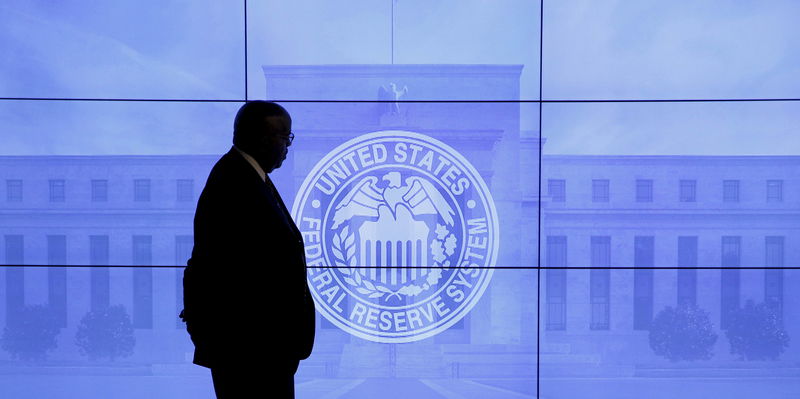By Lynn Adler
NEW YORK, Dec 29 (Reuters) - A fourth-quarter rush of corporate buyouts and refinancing, as markets rallied on prospects of looser financial regulations under a Trump administration, pulled 2016 US syndicated lending volume up to match the prior year's pace.
Expectations of friendlier business policies stoked leveraged buyout (LBO) and mergers and acquisition (M&A) transactions in the year's final weeks, a shift bankers agree will carry into 2017.
In the uncertain and volatile three quarters prior to the US election, total lending volume was running at a four-year low. By year end, syndicated lending had recovered, reaching US$1.99trln, and equaling 2015 volume, according to Thomson Reuters LPC data.
Many companies repriced existing debt, extending maturities and locking in rock-bottom interest rates.
Overall lending fell 6% in 2015 from the previous year, dinged by sinking oil prices, uncertain Federal Reserve policy and a preference for less risky assets in tumultuous markets.
In recent weeks, investment-grade and leveraged lending leaped along with demand for short- and floating-rate assets.
The Federal Reserve hiked rates in December for the first time in a year and signaled three more increases next year. After almost a decade of historically low interest rates, this builds the case for buying loans that are pegged to rates that will be rising in coming months, investors and analysts said.
At the same time, the Republican president-elect and Republican-controlled Congress are widely seen loosening regulatory constraints and opening lending spigots further, bankers said.
"In the LBO space, 2017 will be, if not a record year, a top two or three year," said Brendan Dillon, co-head of global leveraged finance at UBS. "There's a lot of pent-up dealflow."
Under the incoming administration, with philosophies that differ significantly from the previous eight years, "there will be a realignment of winners and losers in certain sectors and that will create a lot of LBO activity," he said.
Total leveraged lending to highly indebted companies ended the year up 11.7% at about US$875bn, after ramping up in the fourth quarter. As M&A also picked up, investment-grade lending finished around US$861bn, about 1.4% below last year's tally.
Technology and healthcare deals dominated, led by multibillion dollar loans for AT&T (NYSE:T) Inc's takeover of Time Warner Inc (NYSE:TWX) and Dell's purchase of EMC Corp (NYSE:EMC) as well as Abbott Laboratories (NYSE:ABT)' separate loans for proposed purchases of St. Jude Medical and Alere Inc.
NEW MONEY
Roughly two-thirds of this year's syndicated loans were refinancings.
"It would be great to see new issuers come to market - true new-money, new issuance that could soak up some of that cash that's on the sidelines," said Adam Brown, senior portfolio manager at Macquarie Group.
If new issuance lags current robust demand, available loans in the secondary market will become even more expensive.
The average bid in the SMi100, gauging the 100 most widely held leveraged loans, rallied to end the year at almost 99, up from a four-year low of 95.3 in February.
Investors poured into the loan market based on Trump's pledges of loosening restrictions on lenders.
"Theoretically, less rules should make it easier and more profitable to lend money out," said Pat Keon, Thomson Reuters Lipper senior research analyst. Also, "if the Fed continues to raise rates in 2017, as they have indicated they plan to, these funds will yield more."
Bank loan funds pulled in almost US$7bn in the six weeks after the election. This influx lifted net inflows to US$5.8bn this year, after US$21.6bn of net outflows last year, according to Lipper.
Average leveraged loan total returns approaching 9% are the highest in four years, propelled by the secondary loan price surge.
Demand from Collateralized Loan Obligation (CLO) funds, the biggest buyers of leveraged loans, should also underpin the market. Banks forecast CLO issuance of US$50bn to US$70bn, versus about US$72bn this year, as managers adjust to rules that kicked in on December 24 forcing them to hold a portion of their fund's risk.
PICKING SIDES
Parsing the victors from the victims of potentially sweeping US policy changes will be paramount, investors and bankers said. So far, investors are biased toward sectors including pharmaceuticals and commodities that would benefit from Trump's vows to relax restrictive regulations.
Autos and technology, in contrast, are among sectors that rely heavily on international business and could be hurt by altered or eliminated trade agreements.
"We're not making major portfolio changes based on assumptions about what the new administration will actually be able to get done," said Brown.
Macquarie has, however, further reduced its exposure to the hospital sector since the election.
"Whether the Affordable Care Act is repealed or reformed, there will be changes and our view is that any changes to that act will be negative for hospitals," he said.
While sector winners and losers are debated, the consensus is that dealflow will mount broadly as the economy grows.
"It's a combination of record dry powder from financial sponsors, very healthy inflows, and strong 2016 performance from leveraged loan and high yield accounts," Dillon said.
